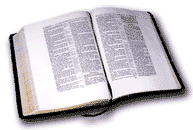Timothy was the aged and
experienced apostle Paul’s younger protégé.
HISTORICAL SETTING:
Timothy was a young man
who joined Paul on his second missionary journey
when he was in the city of Lystra in Galatia (Acts
16:1-4). His mother, Eunice, was a Jew and his
father a Greek. Paul was probably the person who led
Timothy to the Lord (I Tim. 1:2; II Tim. 1:2; I Cor.
4:17), and perhaps on Paul’s first trip there (Acts
14:8-20). Paul took Timothy with him and spent three
years preaching and teaching in Ephesus and the
surrounding area on his third missionary journey
(Acts 18:23-21:17). After Paul’s trip to Jerusalem
for the Passover, Paul was sent to prison in Rome
(Acts 21:18-28:31). While in prison in Rome Paul
wrote his letter to the church at Ephesus (Eph.
1:15-16). He was present with Paul in Rome when he
wrote his four "prison letters." After Paul’s
release from his "first" imprisonment he and Timothy
visited the churches around Ephesus and ministered
there for some time. Paul left for Macedonia (I Tim.
1:3) while Timothy stayed on at Ephesus (I Tim.
1:3). Paul hoped to return soon (3:14), but wrote to
him encouraging him in the ministry (3:15).
According to the letter to Titus, Paul had been to
Crete and had left Titus there with similar
instructions (Titus 1:5); later on Titus had to come
over to Paul at Nicopolis where Paul was wintering
(3:12). Paul will then be imprisoned a "second" time
(II Tim. 1:8, 16-17; 2:9; 4:10, 16-17, 20). (Timothy
is also mentioned in these passages II Cor. 1:19; I
Cor. 4:17; 16:10, 11; Acts 20:4-5; I Thess. 1:1; II
Thess. 1:1 Heb. 13:23).
First and Second Timothy
and Titus are called the "Pastoral Epistles." They
were given this designation in the eighteenth
century because they give advice on matters of
church organization and pastoral responsibilities.
First Timothy is a short minister’s manual which
treats the office, qualifications, and duties of the
Christian pastor.
These three "pastoral
letters" were composed during a major missionary
enterprise of Paul of which the Acts of the Apostles
makes no mention. The events are after the events
covered in Acts 28, i.e., after Paul’s release from
imprisonment in Rome following his appeal to Caesar.
They journeys and work of Paul mentioned in the
Pastoral Epistles cannot be dated in the period
covered by Acts, but took place between his "first"
and his "second" imprisonment to which II Timothy
refers (1:8, 16-17).
A. T. Robertson
summarizes:
"Paul had been in Ephesus
(I Tim. 1:3) after his arrival from Rome, which was
certainly before the burning of Rome in A.D. 64. He
had left Timothy in charge of the work in Ephesus
and has gone on into Macedonia (I Tim. 1:3),
possibly to Philippi as he had hoped (Phil. 2:24).
He wishes to help Timothy meet the problems of
doctrine (against the Gnostics), discipline, and
church training which are increasingly urgent. There
are personal touches of a natural kind about
Timothy’s own growth and leadership. There are wise
words here from the greatest of all preachers to a
young minister whom Paul loved."
There is almost unanimous
patristic testimony and tradition. Clemens Romanus,
writing from Rome to Corinth (95 A.D.), asserts that
Paul, after instructing the whole Roman empire in
righteousness, "had gone to the extremity of the
West (was that Spain? compare with Romans 15:28)
before his martyrdom." The Canon of Muratori (170
A.D.), alludes to "the journey of Paul from Rome to
Spain"; and Eusebius (beginning of the fourth
century) clearly formulates the tradition as
follows: "After defending himself successfully, it
is currently reported that the Apostle again went
forth to proclaim the Gospel, and afterwards came to
Rome a second time, and was martyred under Nero."
AUTHOR:
Internal evidence is Paul the Apostle (1:1; II Tim.
1:1; Titus 1:1). External evidence confirms that
Paul was the author. The witness of the early church
to Pauline authorship is early, clear and
unhesitating. It was not until the nineteenth
century that the authenticity was doubted or even
questioned.
DATE:
Facts seem to indicate that the Pastoral Epistles
reflect the historical situation in which they were
written as belonging to the period after 62 A.D.,
and before the Apostle’s martyrdom in 66 or 67 A.D.
Robertson suggests A.D. 65, C. C. Ryrie and F. F.
Bruce suggest 63.
PLACE OF WRITING:
Probably from Macedonia.
THEME:
Guard that which has been entrusted to you in the
ministry. "Fight the good fight" (1:18).
KEY VERSE:
6:20
KEYWORDS:
teach, serve, command
PURPOSE:
There are three primary goals in this letter: (1)
Encourage Timothy in his ministry at Ephesus, (2) to
warm Timothy of the false teachers and the methods
they use, and (3) to instruct Timothy on the polity
of the church.
THREE HYMNS:
We could have some evidence of early hymnology in I
Timothy.
Hymn #1 "Honor and glory
forever!" (1:17)
Hymn #2 "Mystery of
godliness" (3:16)
Hymn #3 "King of Kings"
(6:15-16)
BISHOP AND ELDER:
Bishops, overseers,
elders were terms used interchangeably in the New
Testament.
WOMEN IN THE CHURCH:
The conditions in the
Gentile world during Paul’s day dictated that women
remain silent in the church (I Tim. 2:8-15).
Christian women in his day took every care not to be
misunderstood by taking the leadership in the
church. These conditions do not exist among us
today. Also in 2:15 Paul is not presenting a special
way of salvation for mothers. He is not talking
about salvation from the penalty of sin, but
salvation (or deliverance) from a wasted life.
Title: Introduction to 1
Timothy
Series:
Introduction to Bible Books



